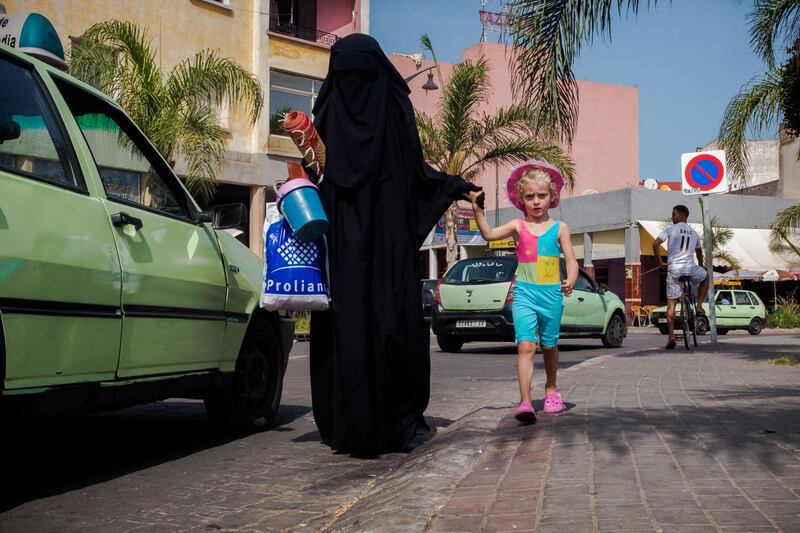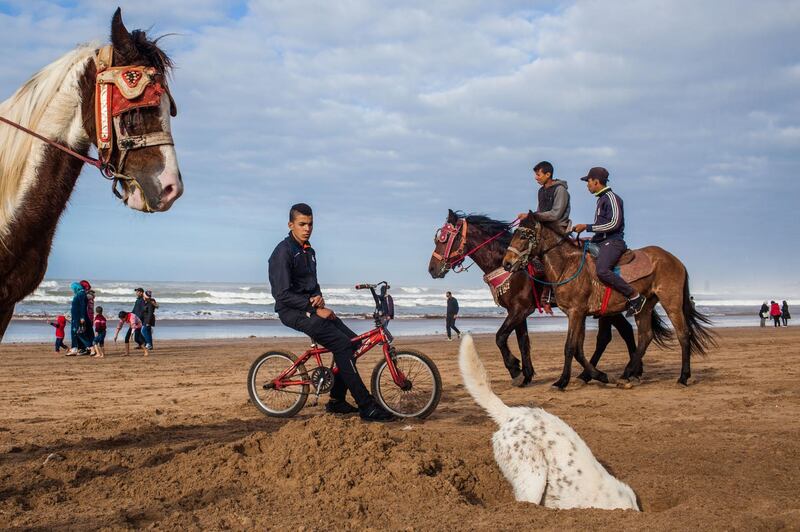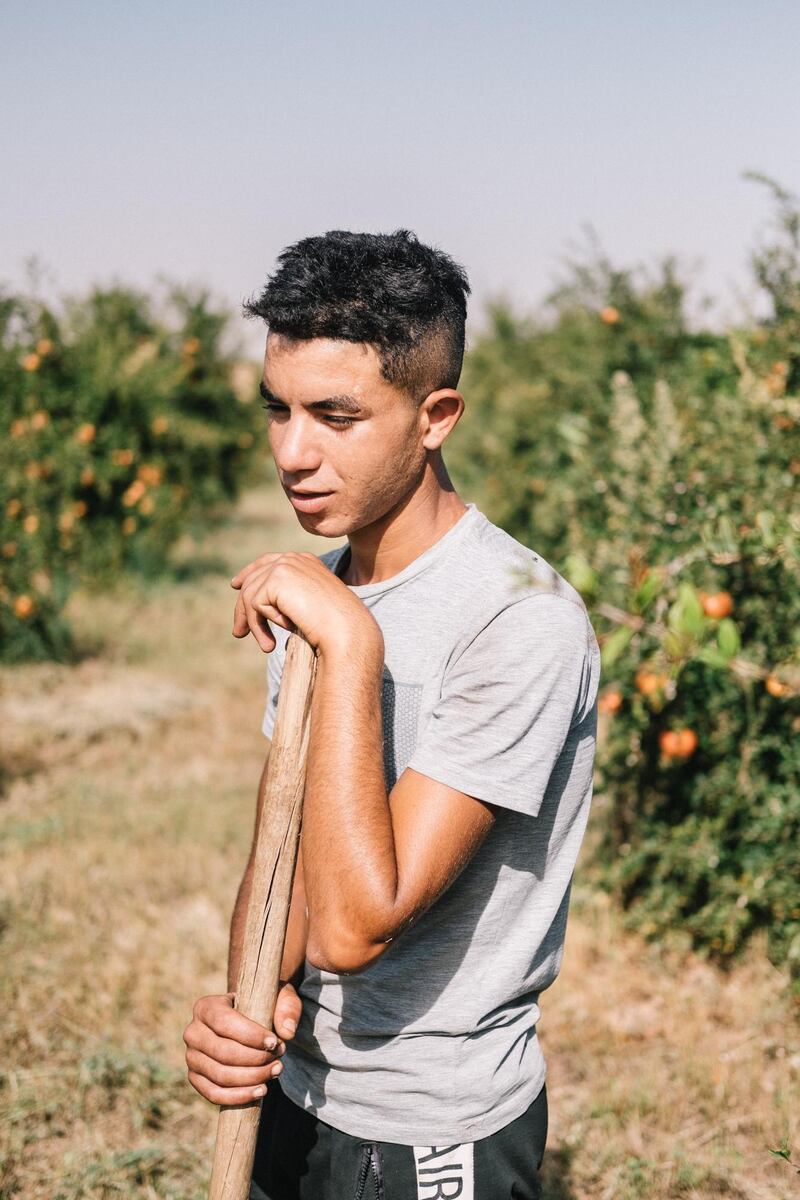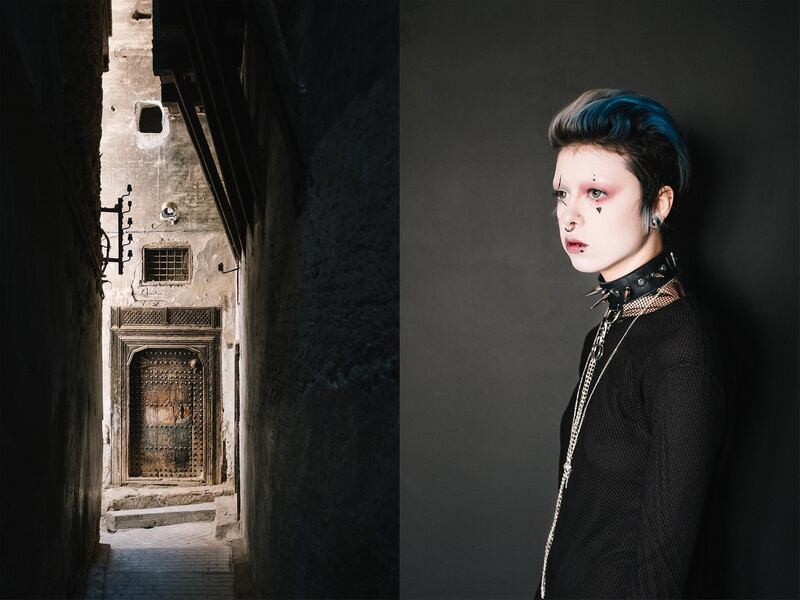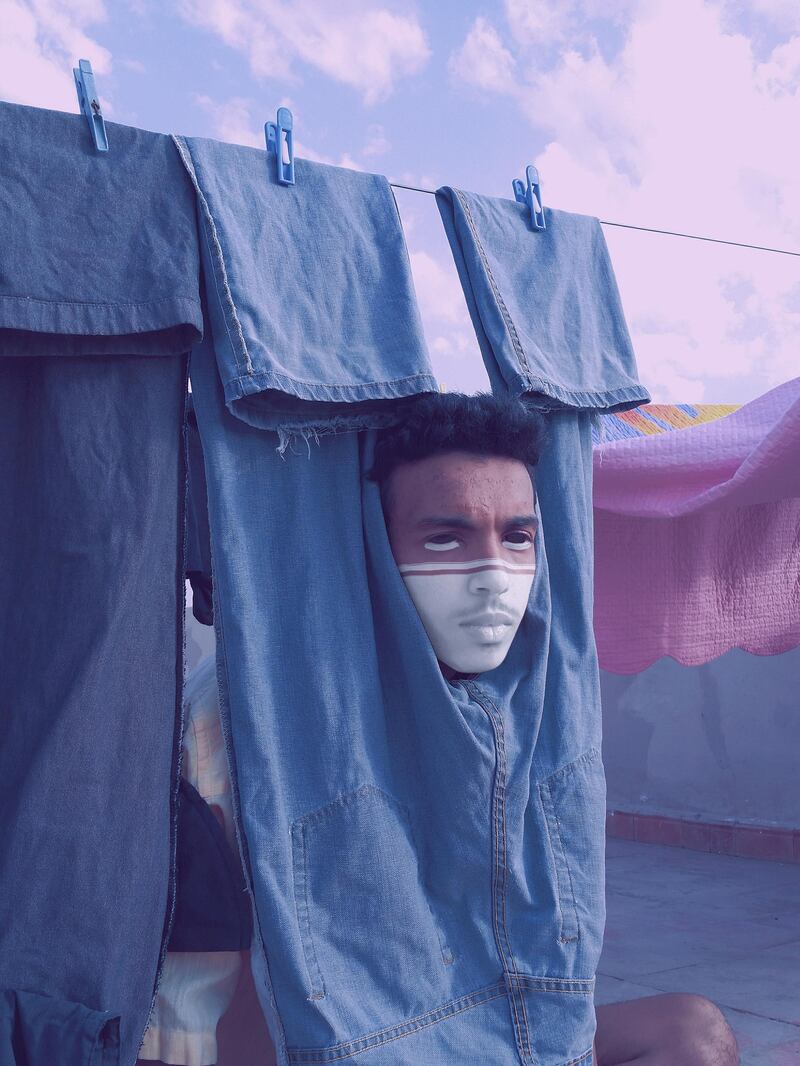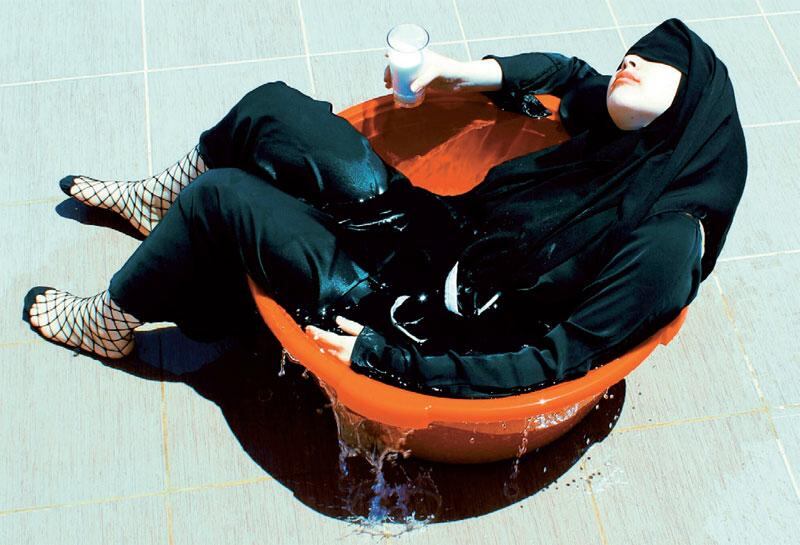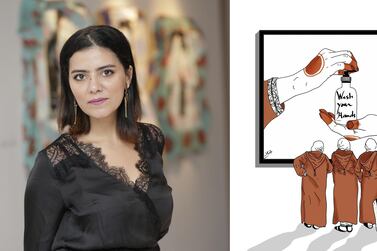M’hammed Kilito was in the Netherlands earlier this month, a day before his home country, Morocco, closed its borders to curtail the spread of the coronavirus. Luckily, he made it home on the last plane before they were closed.
Since he was returning from Europe, Kilito had to self-quarantine for 14 days, away from his family. The pandemic has, without a doubt, turned normal on its head. Much like Kilito’s artwork, it has disrupted the status quo.
Like many of his peers, the photographer, 39, tries to change the way Morocco is seen through his images. The country is photographed extensively, but often the pictures are restricted to its desert, technicolour souqs and geometric architecture. "Usually, the touristic representation of Morocco is orientalist and sensationalising," Kilito tells The National. "In Marrakesh, you see it. It's completely losing its soul because we want to shape it towards the tourist's expectations."
Kilito wants to upend the stereotypes, but his priority is to bring Moroccans into step with their own reality. “We have this very monolithic way of seeing Morocco. But that is very false – it is so many things,” he says.
Kilito's current project, Portrait of a Generation, explores "what it is to be young today in Morocco". It covers sports clubs, rural barriers to education and urban music festivals.
One chapter of the project, called Among You, is a portrait series of young Moroccans, including a tattooed punk rocker and a female bodybuilder, who confront the traditional norms of their society.
“These pictures, in the western world, would not be interesting. In Morocco, it’s quite particular,” he says. “When I show those pictures to people, the first thing they ask me is: ‘Are those people Moroccan?’”
When he was in high school, the children listening to Metallica were seen as freaky, Kilito says, but the internet and globalisation brought new ideas. Young Moroccans are “developing their own identities” and pushing the limits of what they feel is too conservative. “It’s very courageous,” he says, recalling the awe he felt towards one subject, Randa, who walks around her conservative town of Tetouan in Gothic outfits and a leather choker.
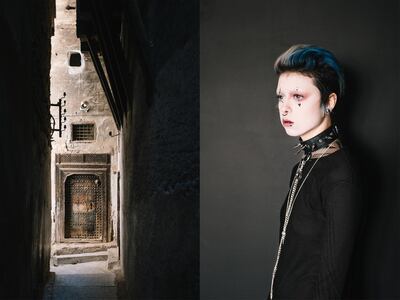
Kilito hopes shining a light on people in the margins of society will make others think more critically and see that no matter how different people are from each other, they can still belong and represent one society. “I’m more interested in the question than the answer,” he says, echoing the mantra of experimental American photographer Duane Michals.
Kilito, who studied sociology, sees photography as a way to “humanise statistics”, such as a 13 per cent unemployment rate among young people between 15 and 24 years, according to World Bank data from last year. Thinking like a documentary-maker, he narrates the dreams and frustrations of the people behind those numbers through his photo series.
Fellow photographer Yassine Ismaili, 35, known as Yoriyas, also writes a new narrative for Morocco, but he works with the drama of single images. After a knee injury ended his breakdancing career, he started photographing other dancers, then turned to the streets. He plays with synchronicity, capturing moments when the mundane chaos of his native Casablanca aligns, like Czech photographer Josef Koudelka did across Europe.
The images nudge you to look beyond the postcard vision of Morocco. Yoriyas calls his photography a “counterexample to the visual record” of Casablanca as seen through guidebooks. Every picture on his Instagram is tagged #CasablancaNotTheMovie. In them, people are living, not performing, and that makes them relatable.
In January, a hulking, 19th-century fort in Rabat reopened as Morocco’s first National Photography Museum. Yoriyas was named curator, and he filled its courtyards and ocean-sprayed ramparts with works by Moroccan photographers, including those of Kilito. Yoriyas did not exhibit celebrity photographers, instead choosing to highlight the young generation, most of whom had never exhibited before.
Smartphones have made photography accessible and Instagram offers widespread exposure. Mourad Fedouache, 19, whose photos are in the exhibition, started taking photos with a broken mobile phone. His main subject: the small-town market where he sells pumpkins with his parents.
Street photography is popular, despite most Moroccans’ aversion to cameras and the police often demanding authorisation. One photographer in the exhibition, Fatima Serri, 24, recently started taking pictures on the side to her accounting job. She critiques the sexism and pressures women face in her conservative community.
Ismail Zaidy, 22, known as L4rtiste, is also a recent arrival on the scene, making Minimalist compositions with his rooftop’s glaring whitewash as a backdrop. His strength is his subtle sense of colour and texture, and support from his family.
Zaidy's mother picks out the fabrics and his siblings pose. His focus is on aesthetics, but there is a message: there are ways to imagine Morocco without leaning on obvious tropes. He involves cultural symbols such as the hijab, and shoots in local landscapes. But "it does not have to necessarily look like Morocco, or have patterns that people associate with Morocco", Zaidy says.
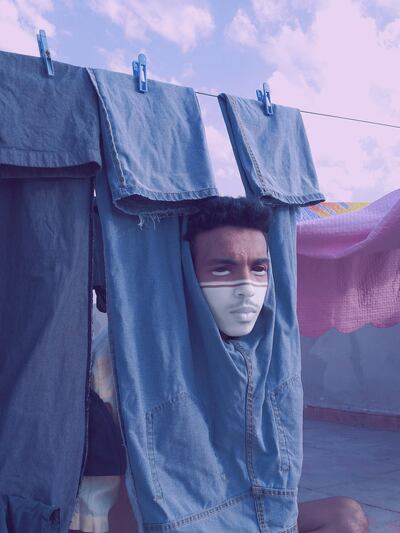
Musicians such as Issam or Malca are painting new self-portraits with music videos, and others, such as Chater Karim, are creating hip fashion scenes via Instagram.
“We all get to decide how Morocco is portrayed,” Kilito says. He wants new visions of Morocco to spread, but when it comes to exhibitions, he says: “We are converting people who are already converted. It’s always the same elites who go to openings.”
But the new museum is next to a working-class neighbourhood, near a football field and a popular seaside sunset spot. “I’m seeing people I’m not used to seeing at exhibitions,” he says.
Mehdy Mariouch, 34, who is also featured in the exhibition, made portraits of unemployed miners in the crumbling coal town of Jerrada. But his subjects could not travel, so he plastered the life-size photos on the walls of abandoned buildings there.
Even though the talent is here, making a living and getting seen is tough. Kilito has found hope at the Addis Foto Fest in Ethiopia, where African photographers could talk about shared realities and build mutual support. He is adamant that Morocco and its neighbours need to craft their own photo industries. “In Morocco, after a certain time, you see everyone, you meet everyone, and that is it,” Kilito says. “So to do more is to look abroad.”
